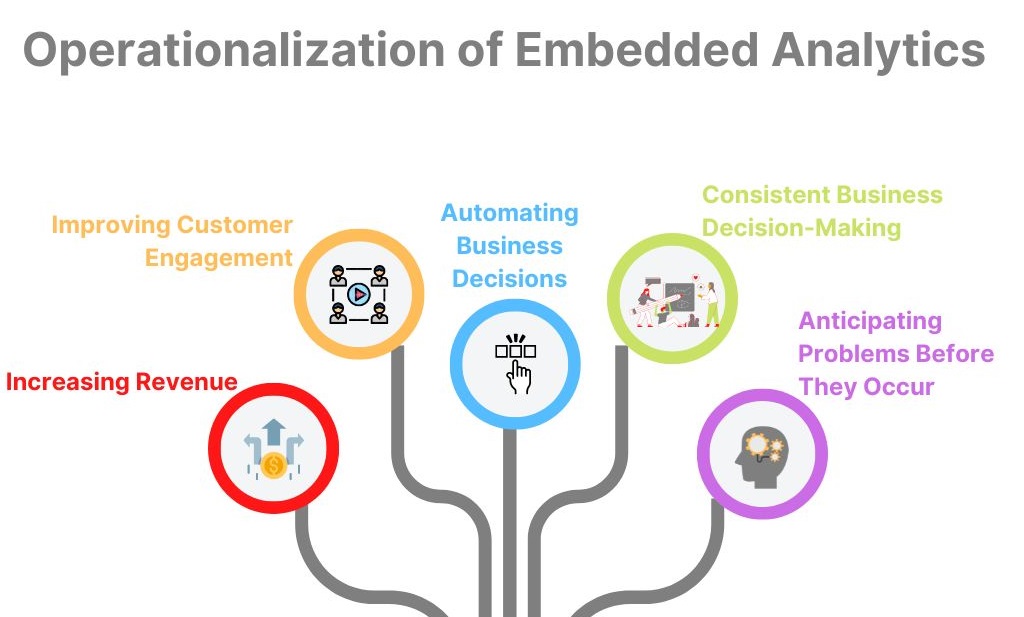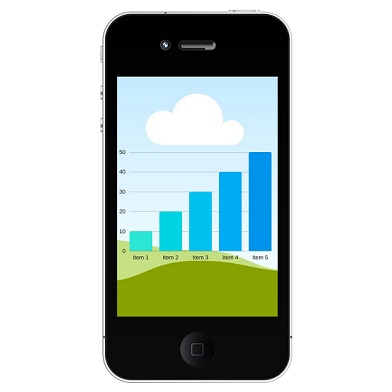Embedded Analytics – Empowering the Masses
A business is a combination of various processes. Improvement in that business will happen when all the processes are harmonized. Coordination is needed not only between various departments and their leads but even the employees lower down the rank.
This harmonization does not happen by chance but by design. Employees at all levels, and not only those in the core team, need to be empowered. And in today’s increasingly competitive world, business intelligence (BI) is one of the key factors that allows an internal team to attain that synchronization.
Increasingly, more and more companies around the world, across sectors, are taking to BI tools, if surveys and studies are an indication. So what’s really the purpose of these tools? In one line – it’s to turn your big data into actionable insights.
How? It gives business users access to data and its analysis in the form of reports and dashboards. Yet, so strong is competition today that mere BI tools do not suffice. With the rapid strides in technology, many companies have taken that one more step to stay ahead of the game – embedded analytics. This is a business way of embedding dashboards and charts right into the business app or device for employees and, in many cases (Amazon and Netflix), even customers to use. Such tools that use embedded analytics are browser-based and support JavaScript programming interfaces, for example.
Gartner has defined embedded analytics as the use of reporting and analytic capabilities in transactional business applications. To be considered embedded they must be easily accessible from within the application itself.
Various factors are driving this trend but the leading one is that companies are increasingly looking out for real-time analytics to take more timely decisions.
Many experts in the analytical world now see the embedded analytics area as a high-growth one, while a few have even ventured to predict that it may ultimately make traditional BI tools obsolete.
Why Embedded Analytics Required?
So what are the positives of embedded analytics? The first is that it increases the reach of a company’s analytical process internally, and the other is the ability to analyze in near real-time. Companies that have started using modern-day embedded analytics tools have embedded (either built or bought this software) in their core business apps like Finance, Marketing, and even Human Resources.
Embedded analytics, unlike the traditional model of BI, is proactive. We talked of harmonization between internal teams and employee empowerment; that’s where embedded analytics can play a big role. It makes data analytics more consumable, meaning, it does not leave analytics to the motley group of data scientists or BI analytics but makes it available to more employees, allowing them to take business-related decisions, faster.
Deploy Embedded BI Analytics a Future of Data Utilization
This forward-looking form of analytics not only provides actionable insights based on data, but it comes with great ease of use. Those using such apps do not need to quit the app to view the results – they can see it, analyze performance and recommend action right there and there. No need for a separate login. That’s empowerment.
But here’s something – before your company decides to embark on embedded analytics, it needs to identify the precise analytical functionality that has to be embedded.
Operationalization of Embedded Analytics
Making the results a part of business operations – is being used by companies for:
- Increasing revenue
- Improving customer engagement
- Automating business decisions
But two other areas where embedded analytics can make a significant impact is:
- Consistent business decision-making
- Anticipating problems before they occur
The latter is one aspect of this advanced form of analytics that’s still to catch on.

Yet, that’s set to change. In the next few years, companies are set to move from diagnostic analytics, reacting to a given development, to more predictive analytics. The latter will enable them to prepare their business for tomorrow. This form of embedded analytics may look somewhat difficult to implement right now, but advancements in technology will soon change all that.
Embedded analytics not only acts as a GPS that guides your vehicle in real-time but soon, will also be able to pinpoint upcoming hurdles on the way.
An Engine That Drives Customer Intelligence
Oyster is not just a customer data platform (CDP). It is the world’s first customer insights platform (CIP). Why? At its core is your customer. Oyster is a “data unifying software.”
Liked This Article?
Gain more insights, case studies, information on our product, customer data platform


No comments yet.